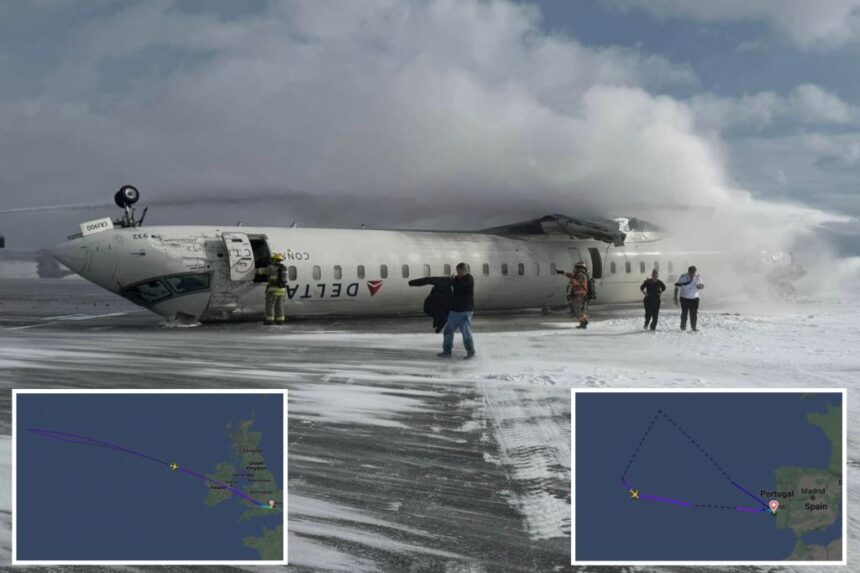The recent Delta flight crash in Toronto has caused chaos for numerous other flights, leading to some being turned back over the Atlantic Ocean. Passengers on a British Airways flight from London Heathrow and a TAP Air Portugal flight from Lisbon found themselves in a situation of uncertainty as their flights were forced to make U-turns mid-air due to the closure of runways following the crash.
British Airways Flight 99 and the Toronto-bound TAP flight from Lisbon both had to divert their routes, with the British Airways flight landing back in the UK after a six-hour “flight to nowhere.” The TAP flight initially redirected towards the Azores before eventually returning to Portugal after an eight-hour flight.
The aftermath of the crash saw a total of 44 diverted flights, with some being rerouted to Montreal, Ottawa, Hamilton, Chicago O’Hare, and Pittsburgh. These diversions not only pose challenges for airlines but also inconvenience passengers and disrupt flight schedules.
The Delta flight carrying 76 passengers and four crew members crashed at Toronto Pearson Airport, resulting in 18 injuries. Three of the injured were taken to nearby hospitals, including a pediatric patient who was rushed to the Hospital for Sick Children. The majority of the injured passengers suffered moderate or minor injuries.
The cause of the crash that led to the plane flipping over on the icy runway is still under investigation. Survivors recounted the terrifying experience of the crash landing, with one passenger describing the chaotic moments as the plane hit the runway hard, veered sideways, and ended up upside down.
The Transportation Safety Board of Canada is leading the investigation into the crash while flight operations have since resumed at the airport. The incident serves as a stark reminder of the unpredictable nature of air travel and the importance of safety measures in place to prevent such accidents.








